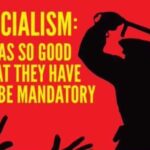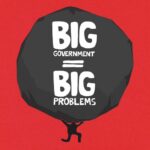The Federal Reserve is probably the most powerful cartel in the world. Most people think it is a government agency; in fact, it is an organization of private bankers. The US government has given it a monopoly on US currency, which it can inflate or deflate at will. Virtually overnight, the Fed, as it’s often called, can destroy the US economy, creating boom and bust cycles. As goes the United States, goes the world.
The government has given the Fed its power in order to get a powerful trade-off. When politicians want to spend, but don’t want you to let you know by raising your taxes, they borrow money from the Fed. They give the Fed IOUs; the Fed “prints” (creates) the money. In essence, the US government passes go on the board game of Monopoly; you do not.
Indeed, your savings and/or your next paycheck have just declined in buying power to the exact extent that the government has borrowed. The government’s IOUs are held by individuals, corporations, and pension plans, including Social Security and other government-sponsored retirement programs. For our pensions to pay us, our children and grandchildren will have to be taxed to pay off these IOUs. Unless we are willing to cripple the next generations financially, we may have no pension at all! This is why many economists say that the babies who are born today are already over $50,000 in debt.
At one time, US currency was backed by gold. Since gold supplies were limited, banks limited inflation. If the Fed or the banks overinflated, there would be runs on the bank as customers tried to retrieve their gold. When the US stopped backing the currency held by its citizens with gold in the 1930s, inflation accelerated. Today’s dollar is only worth about five cents of what it was backed by gold. Another way of looking at this, is that 95% of our 1930s dollar has been inflated away by government borrowing. Because this borrowed money will one day have to be paid back to the Fed and its member banks, we don’t owe it to ourselves at all. We owe it to the bankers.
At one time, in some countries, when banks overinflated, the owners had to use their personal assets to pay back their depositors. If they couldn’t do that, other banks often did so to gain new customers and to reassure the public. However, this didn’t happen very often, because bankers were highly motivated to keep inflation under control.
In the US, banks did not have to pay back their depositors. Also, state laws demanded that some of their reserve be in government IOUs, instead of gold. Consequently the US had quite a few bank runs, even before the establishment of the Federal Reserve.
In countries with more aggressive regulation, bank crises were common, averaging about 8.4 per hundred years. However, in countries that allowed competing currencies and insisted that bankers pay depositors out of their personal funds if they over-inflated, crises averaged about one per century (for more detail, see Figure 9.1 from Healing Our World).
One of the banking crises experienced in the United States was called the Great Depression and happened shortly after the Fed was established. First, the Fed inflated the currency and then deflated it suddenly. Many people who had borrowed money for their businesses or for speculation found that they could no longer renew their loans and were forced into bankruptcy. While many US banks failed, costing American depositors an estimated $565 million, Canadians lost only 3% of that amount. No Canadian banks failed. Canadian banks had few regulations, no restrictions on branch banking, and no central bank with an exclusive monopoly on currency issue. Stockholders of Canadian banks had to pay depositors out of their own personal funds if they overinflated.
Many people have the impression that deregulation caused the banking crises that we saw at the end of the 20th century. However, what we actually had, especially in the US, was re-regulation that encouraged more inflation and high risk “investments.” In addition to having to pay the “inflation tax,” taxpayers had to bail out the bankers!
People without property, and those on fixed incomes, are hurt most by inflation. Inflation redistributes the wealth from those who have little to those who have much, increasing the gap between the rich and poor.
Thankfully, there is a better way that has been proven in the toughest testing ground of all: the real world. By allowing competing currencies, the one that inflates the slowest will be the one that most people choose. The good currency will drive out the bad.
Entrepreneurs have tried in various ways to establish competing currencies in the US, but have usually been thwarted by the federal government (e.g., the Liberty Dollar). Time Dollars are a way to bank hours of labor, and exchange them for someone else’s. Bitcoin is a digital currency which is slowly gaining acceptance in the retail world.
Only time will tell how viable these alternative currencies are. Clearly, the private sector is trying to find a way to make Federal Reserve notes as obsolete as first-class mail. When that happens, the stranglehold that the Fed has on the US money supply will be broken – as long as our government doesn’t outlaw these alternatives. Traditional banks may become obsolete as well.








1 thought on “Banking on Aggression (from the “Cliff Notes” version of “Healing Our World”)”